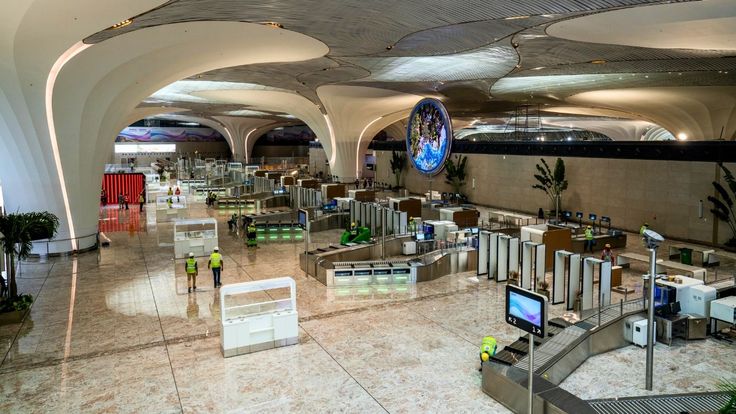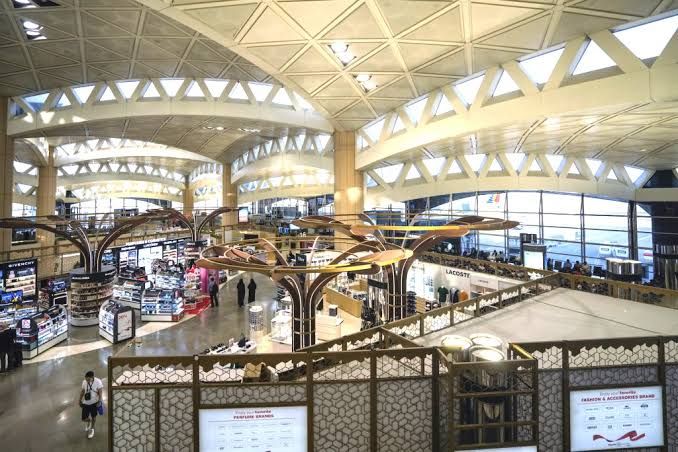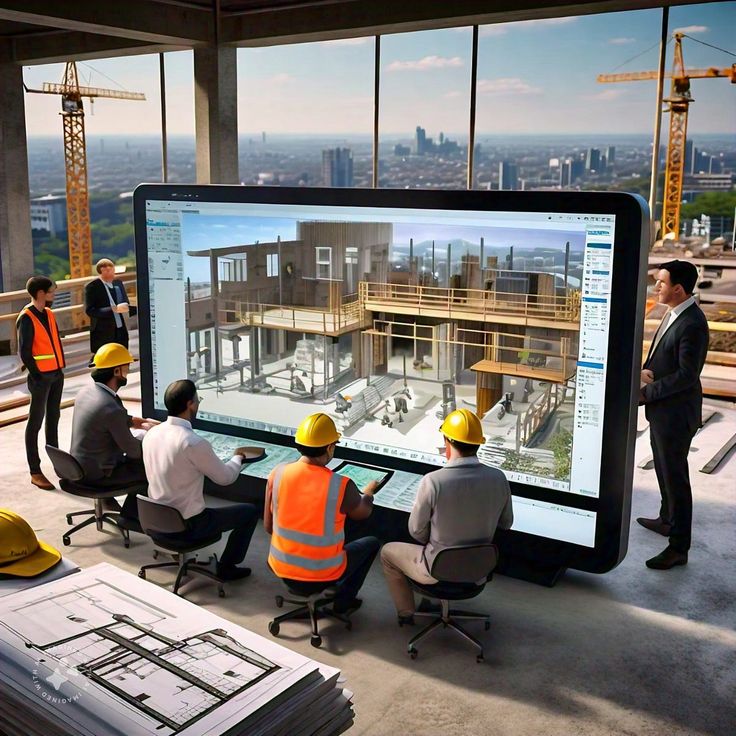
Introduction
India is evolving faster than ever, especially in infrastructure, and at its epicenter, it is the Navi Mumbai International Airport (NMIA) – a ground-breaking project involving innovation, technology, and sustainability.
However, what makes NMIA truly innovative is not the size of the project or how modern it might look, it is how Building Information Modeling (BIM) and Digital Twin technology is being deployed, creating India’s very first fully digital airport,
Let us ask: How are they building the future of airport design? Why would it be prudent for you to learn BIM today?
What Makes Navi Mumbai Airport a “Digital Airport”?
The Navi Mumbai International Airport, a project by Adani Airports, is anticipated to host 90 million passengers each year when the project is complete. But besides the numbers, it has an underlying digital backbone that is what makes it special.
From day one, engineers have mapped out every inch of this massive airport using BIM and Digital Twin tools – runways, terminals, parking, drainage, and utilities. Every system is integrated which enables the design, contractor, and operations teams to work together seamlessly.
Key Features:
India’s first fully digital and sustainable airport
BIM technology from Trimble is used in the design process and project coordination
Built using AI-enabled facility management systems
Aims for net-zero energy
Incorporates real-time performance measured using the Digital Twin
Understanding BIM – The Digital Foundation
Building Information Modeling (BIM) is revolutionizing the construction process. Rather than relying on isolated 2D drawings, BIM permits architects, engineers, and builders to collaborate in one smart 3D model containing all information about the project.
At Navi Mumbai Airport, BIM is employed to:
Catch and resolve design clashes upfront
Create accurate estimates of cost and quantity (otherwise known as 5D BIM)
Assist interdisciplinary coordination
Simulate construction prior to construction
Plan safe, efficient on-site execution
In short, BIM gives the project team the ability to “digitally build” before the real world build begins — saving time, funds, and a lot of rework.

Digital Twin – The Living Version of BIM
Whenever BIM generates the digital design, the Digital Twin keeps the design system dynamically alive.
A Digital Twin is a digital duplicate of the physical airport — connected to live data from sensors, IoT devices and systems within the facility. This design technology will allow the airport team to understand and monitor things such as energy use, temperature fluctuations, equipment performance and passenger flow in real time.
At Navi Mumbai Airport, the Digital Twin will:
- Constantly track the power, lighting and HVAC systems
- Predict maintenance before problems arise
- Produce a sense of sustainability through energy consumption
- Increase the passenger experience through data-informed insight
The combined power of BIM and Digital Twin creates a rich digital ecosystem that makes the airport smarter, safer and more efficient — from the design process and into day-to-day operations.
The Benefits of Using BIM and Digital Twin in NMIA
- Enhanced Design & Planning
Using BIM, designers will be able to make better informed, data-driven decisions. All systems are virtually tested before construction begins, from the terminal design to the baggage handling system.
- Cost & Time Savings
Through the integration of design with schedule (4D) and cost (5D) data, BIM can help with accurate scheduling and budgeting, which reduces the need to make costly changes during the construction process.
- Better Team Collaboration
Everyone who has a role on the project — architect, structural engineer, contractor and authorities — will work collaboratively on one single, coordinated model. This will help to avoid misunderstandings and speed up approvals.
- Sustainability Goals
Energy-modeling with BIM will help minimize waste and design, plan, and construct for net-zero carbon operations.
5.Smarter airport operations
Once fully operational, the Digital Twin will allow the asset to be managed, maintenance predictions and improved passenger safety — ultimately leading to a smart airport experience.
Trimble's role in developing Digital Airport
Tech Company Trimble has played a big part in NMIA creating the digital airport. Using platforms like Tekla Structures, Trimble connect and geospatial data integration, teams have been able design, coordinate and deliver construction projects with accuracy.
Having this digital-first approach helps to ensure that the most complex structures — from steel members to MEP systems — fit together perfectly on site while avoiding construction mistakes and speeding up delivery time.
India’s Digital Infrastructure Revolution
Navi Mumbai Airport is situated in a much broader movement — India’s transition to smart and sustainable infrastructure.
Government programs such as Gati Shakti, Smart Cities Mission, and Digital India are supporting BIM and Digital Twin technology adoption in highways, bridges, metros, and airports.
Digital construction is changing the way India builds, from the Delhi Metro to the Pune Metro and now NMIA.
Why BIM Skills Are the Future
Now that more projects are utilizing a digital workflow, there is now a very high demand for BIM professionals with experience.
Regardless of whether you are a civil engineer, structural designer, or architect, learning to use BIM tools can help you unlock new opportunities across the globe.
Here are the top BIM Careers:
BIM Engineer / Modeler
Revit / Tekla Specialist
BIM Coordinator or BIM Manager
Digital Twin Analyst
Infrastructure BIM Designer
Build Your BIM Career with Castallio
At Castallio, we train you to think and work like a BIM professional, not just teach you software.
Some outcomes to expect in our Professional BIM Management Program are:
– Use of Revit, Navisworks, Tekla, Civil 3D, and InfraWorks
– Working with large scale projects: Airports, Bridges, Highways
– Exposure to the emerging world of Digital Twins
– Jobs with top engineering firms
You will learn the knowledge and skills that firms like Adani, L&T, and AECOM are looking for. You will work on projects such as the Navi Mumbai International Airport and more.
Final Thoughts
The Navi Mumbai airport is not just any mega project, it is part of India’s vision to a connected, intelligent, sustainable future and framework.
As BIM and Digital Twin technology act as the vanguard, the construction industry is ushering in an era of digital.
If you’re ready to be a part of it, now is the time to start your BIM journey.
Be a part of Castallio’s BIM programs to take that first step into the smart cities and airports of the future.



